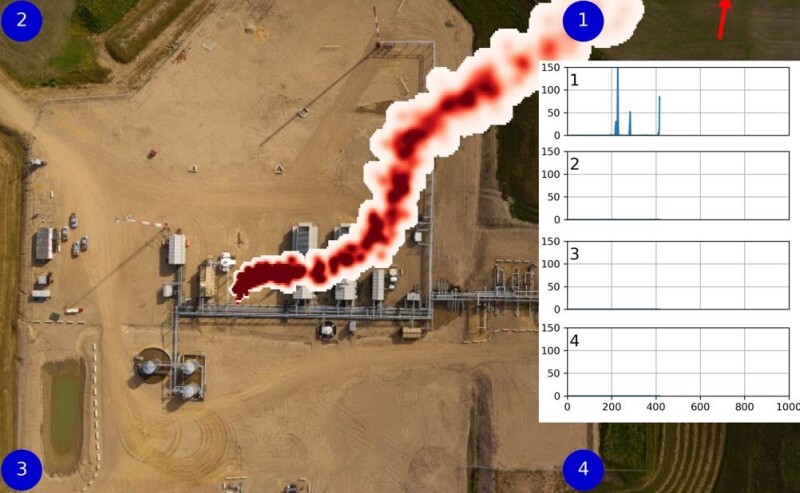Methane emissions from the oil and gas industry are undergoing intense scrutiny as part of the energy transition. Elimination of these emissions is considered the fastest achievable means to slow climate change because these emissions can be stopped through incremental improvements.
These emissions originate from a variety of sites, and recent data suggest many emission events are intermittent with a small number of large releases contributing the majority of total emissions.
Currently, no way exists to predict facilities likely to release large quantities of methane, thus all sites along the upstream production network must be monitored. Although methane monitoring in many locations typically involves periodically inspecting facilities, in contrast, continuous monitoring using methane emissions detectors installed permanently at a site offers an effective way to identify, quantify, and repair intermittent emissions. Installing emissions detectors across many diverse sites, however, can be economically challenging.
The continuous methane emissions monitoring system described in this paper is based on a small number of Internet-of-Things-enabled, fixed-location methane sensors located at the boundaries of each facility (Fig. 1).
The detectors simultaneously collect measurements of methane concentrations and meteorological conditions, such as wind speed and direction, over time. These recordings are first filtered and averaged via edge computing through a procedure informed by knowledge of methane dispersion in a typical wind temporal spectrum to ensure that only high-quality and stable measurements are used.
The data are then sent via a secure gateway to an interpretation cloud platform where they are inverted based on a suitable Gaussian plume dispersion model to confirm the existence of a leak, its position, and the emissions rate.
This paper describes a cost-optimized, continuous, methane emissions detector connected through Internet of Things technology and capable of being economically deployed worldwide on a large scale. In particular, the paper presents the core innovations in the interpretation methodology and how they lead to a high performance of the full system demonstrated through testing at a facility that can generate known methane releases.

